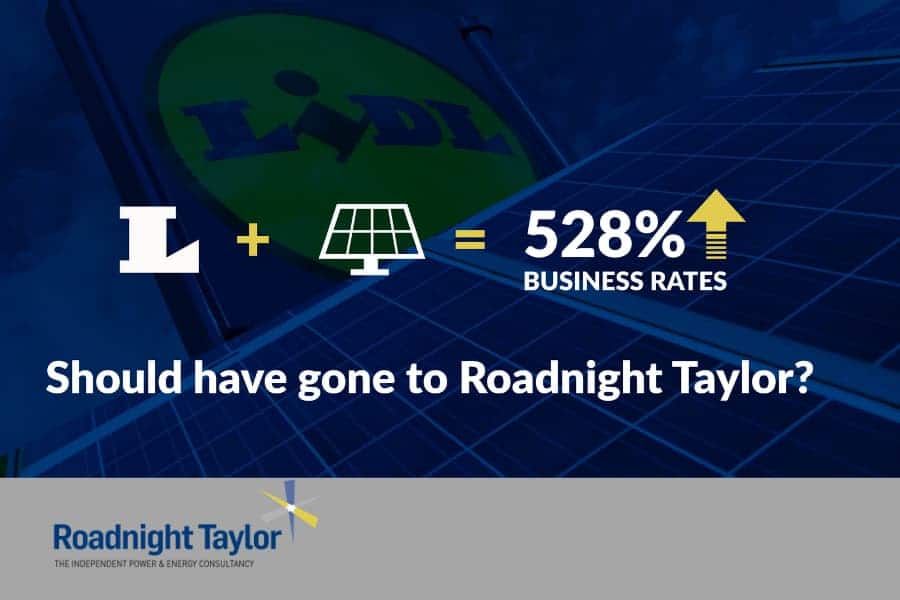Don’t let Lidl business rates liability case scare you away from solar
The recent news that supermarket chain Lidl saw its business rates jump by over 528% due to changes in the valuation of the solar PV installations at its sites, should not scare businesses away from solar.
However – with a significant majority of over 30,000 non-domestic solar systems (between 10kW and 500kW) on commercial rooftops and sites that have not yet been reviewed by the Valuation Office Agency (VOA) – the case has highlighted that there could be thousands of businesses that are unknowingly accruing liability for rates that could be backdated to April 2017.
The issue centres around the controversial change in 2017 in how business rates for sites with solar arrays are calculated. The rates vary depending on the size of the installation and who the energy is used by, which has caused confusion among many businesses, and resulted in avoidable mistakes being made, as Richard Palmer, our Senior Consultant explains:
“While the Lidl case has caused some concern among businesses with solar installations – which is understandable considering the significant number that are yet to be reviewed by the VOA – it should not put organisations off considering solar as part of their sustainability plans. It still represents an important opportunity to manage energy costs and decarbonise in a net zero era.
“That said, what it does highlight is the need for businesses that have solar installations to take action now to assess whether they are accruing a significant business rates liability – and the extent of that cost – and then to calculate any costs accrued to date, which will be backdated to April 2017. Their next step should be to take informed action to reduce any tangible risk and costs.
“For organisations considering investing in solar, it is important to plan ahead to mitigate risk. Amongst recent cases we have addressed, one retail and leisure business is using more than 90% of its generated electricity in its store and restaurant. It will be liable for business rates in excess of £6,000 per annum for this array alone, and accruing a cost back to April 2017, but appropriate action can be taken to reduce this cost in the future.”
The commercial implications of the current policy can be complicated. Further, in the 2020 Budget the Chancellor announced a review of business rates, meaning the rules could change again – but hopefully it will lead to a significant reform to the current methodology.
The key message – get good advice
Richard continues:
“The key message here is to get good advice. Working with an independent specialist that not only understands the policy issues and nuances – but also has the technical, data-science and commercial expertise associated with deploying solar – can help a business insulate its existing solar assets from business rates impacts, and make an informed decision on new investments.
“There are many steps that can be taken to mitigate risk or stop rates from continuing to accrue. A common example is moving ownership of an installation into a special purpose vehicle, but more intelligent strategies can often achieve the same objective at lower cost – as well as avoiding the overhead associated with new corporate entities.
“It is also worth noting that although solar has hit the headlines on this occasion, the same principles look likely to be applied to battery storage facilities. And, while business rates are a major issue, it is actually just one example of the many significant hazards that should be considered when investing in solar, storage, heat pumps and EV charging infrastructure. Working with an independent consultant that has a deep understanding of the relevant technologies, policies, risk and opportunities will ensure that companies optimise their energy investments.”

